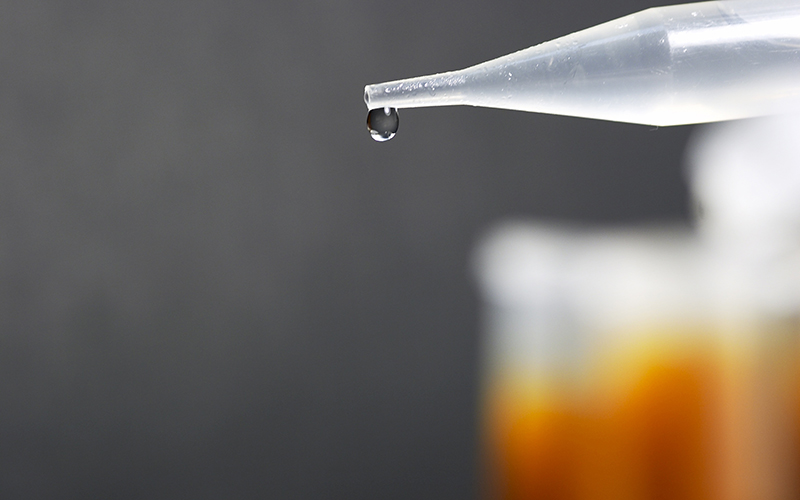Most makers and consumers know that every cosmetic sold in the United States must include an ingredient declaration on the product label. However, many don’t realize there’s an exception — incidental ingredients.
What are Incidental Ingredients?
Under FDA regulations1, incidental ingredients are components present at insignificant levels and that have no technical or functional effect in the cosmetic. In other words, if something’s only incidentally present — and doesn’t actually do anything in the finished product — you can treat it as incidental.
Incidental ingredients generally fall into two main categories:
1. Substances that are part of another ingredient
A substance that is part of another ingredient, but has no technical or functional effect in the finished product, may be an incidental ingredient.
For example, suppose you buy a rose hydrosol that contains 0.6% Optiphen as a preservative. If you use just a few ounces of that hydrosol in a lotion, the resulting trace of Optiphen in the finished lotion is so diluted that it no longer has any preservative effect. That tiny amount could be considered incidental and left off the label.
However, if you make a product that is mostly or entirely that preserved hydrosol, and that preservative still plays a role in keeping the product safe, it’s not incidental — and it must be included in your ingredient declaration.
2. Processing aids
Processing aids are materials used during manufacturing that don’t remain in the finished product.
For example, you spritz your bath bomb with alcohol in order to make it easier to form, but the alcohol evaporates from the finished product. Even though you added it in order to more easily make the product, there’s no alcohol in the finished bath bomb.
When You Can Leave Incidental Ingredients Off
You may omit an incidental ingredient from your label only when both of these are true:
- The ingredient is present at insignificant and non-functional levels in the final product, AND it has no technical or functional effect — meaning it doesn’t act as a preservative, emulsifier, colorant, fragrance, solvent, or anything else.
- OR it was added as a processing aid and was then removed.
This aligns with the FDA’s intent, as published in the Federal Register2 when the cosmetic labeling rules were finalized. The agency’s goal was to ensure consumers have meaningful ingredient information, while recognizing that trace carryover substances — like minute residues from raw materials or processing — don’t provide useful information and could clutter the label.
Incidental ingredients were excluded to:
- Keep labels readable and focused on ingredients that affect the product’s composition or performance.
- Avoid confusion over trace, non-functional components, or processing aids that have no functional role.
In short, the exemption for incidental ingredients isn’t meant to hide anything — it’s meant to make labels more meaningful.
The Benefits of Omitting Incidental Ingredients
Leaving incidental ingredients off your label can:
- Simplify your ingredient declaration, especially when using complex ingredients from suppliers.
- Save space on small labels.
- Reduce confusion if trace materials aren’t relevant to your product’s performance or safety.
- Eliminate potential label changes: If your supplier makes a minor change, your label might need to be updated.3
For example, your emulsifier blend might contain traces of residual processing acid. Declaring that acid could mislead a consumer into thinking it’s a purposeful ingredient — when it isn’t.
Why You Might Choose to List Incidental Ingredients Anyway
On the other hand, there are good reasons you might still choose to list incidental ingredients:
- Transparency: Consumers increasingly want to know everything in a product, even trace materials.
- Allergen awareness: A “trace” component might trigger a reaction for a sensitive customer; even components present at 0.001% can have an impact.
- Ease: Ingredients that are present at 1% or less may be listed in the ingredient declaration in any order (after ingredients present at more than 1%). That makes it very easy to include even the smallest trace, since you don’t have to know the exact amount – just that it’s there.
Keep in mind that from a practical standpoint, you can’t determine what’s incidental unless you know exactly what’s in your raw materials. That’s where good supplier communication comes in.
What You Should Expect From Your Suppliers
Your supplier should provide:
- A complete ingredient list for each raw material you purchase.
- Disclosure of preservatives, stabilizers, or solvents included in the material — even if they’re present at low levels.
- A Safety Data Sheet (SDS) and technical data sheet identifying any potential allergens or residuals.
If a supplier tells you an additive is “proprietary” or “not required to be disclosed,” ask follow-up questions. You can’t correctly label your own product — or decide what’s incidental — without knowing what’s in your ingredients.
Keeping clear records of supplier information helps you justify why a component was treated as incidental if it ever comes into question.
Applying This to Soap and Cosmetic Handcrafters
For cosmetic products — such as lotions, lip balms, or bath bombs — every ingredient that has a function in the finished product must appear in the declaration. Only truly insignificant, functionless trace materials may be omitted.
For non-cosmetic soap (the kind exempt under 21 CFR 701.20), an ingredient declaration isn’t required by the FDA — but many makers voluntarily include one for transparency. Even in that case, knowing which ingredients are incidental helps you make informed marketing and labeling decisions.
Final Thoughts
Incidental ingredients are a small but important piece of cosmetic labeling compliance. The key is understanding intent: the rule isn’t there to let manufacturers hide ingredients — it’s to make ingredient labeling accurate, useful, and not misleading.
If an ingredient affects your product in any way — even at low levels — it’s not incidental. When in doubt, list it.
- 21 CFR §701.3(l) ↩︎
- 45 FR 72112, Oct. 31, 1980 ↩︎
- Note that this would only apply to supplier changes that made only incidental changes to your product. If a supplier made a major change, you would definitely need to update your label to reflect the correct ingredients. See also: Ingredient Declaration: Blended Ingredients ↩︎


Leave a Reply